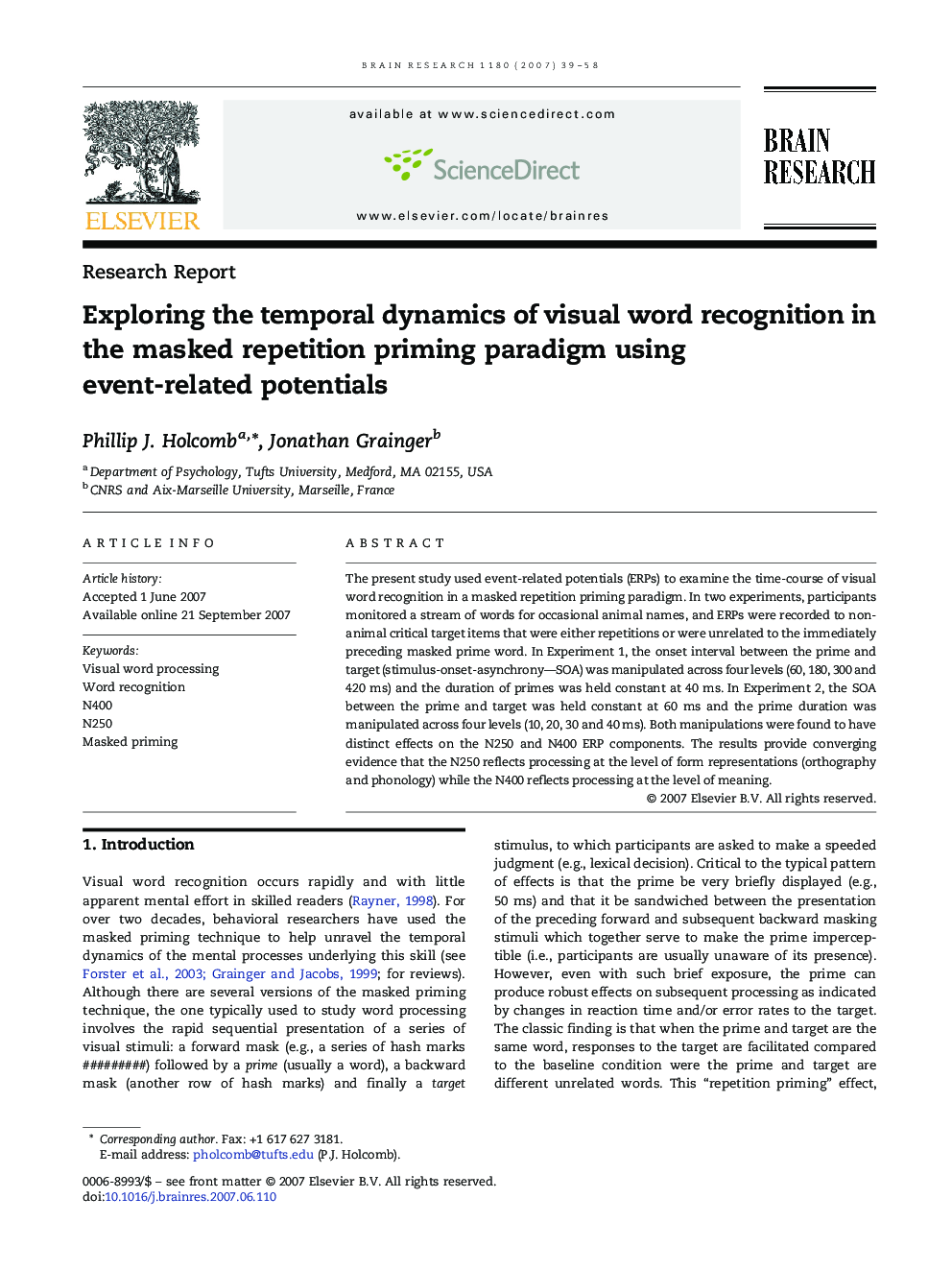| Article ID | Journal | Published Year | Pages | File Type |
|---|---|---|---|---|
| 4330449 | Brain Research | 2007 | 20 Pages |
The present study used event-related potentials (ERPs) to examine the time-course of visual word recognition in a masked repetition priming paradigm. In two experiments, participants monitored a stream of words for occasional animal names, and ERPs were recorded to non-animal critical target items that were either repetitions or were unrelated to the immediately preceding masked prime word. In Experiment 1, the onset interval between the prime and target (stimulus-onset-asynchrony—SOA) was manipulated across four levels (60, 180, 300 and 420 ms) and the duration of primes was held constant at 40 ms. In Experiment 2, the SOA between the prime and target was held constant at 60 ms and the prime duration was manipulated across four levels (10, 20, 30 and 40 ms). Both manipulations were found to have distinct effects on the N250 and N400 ERP components. The results provide converging evidence that the N250 reflects processing at the level of form representations (orthography and phonology) while the N400 reflects processing at the level of meaning.
